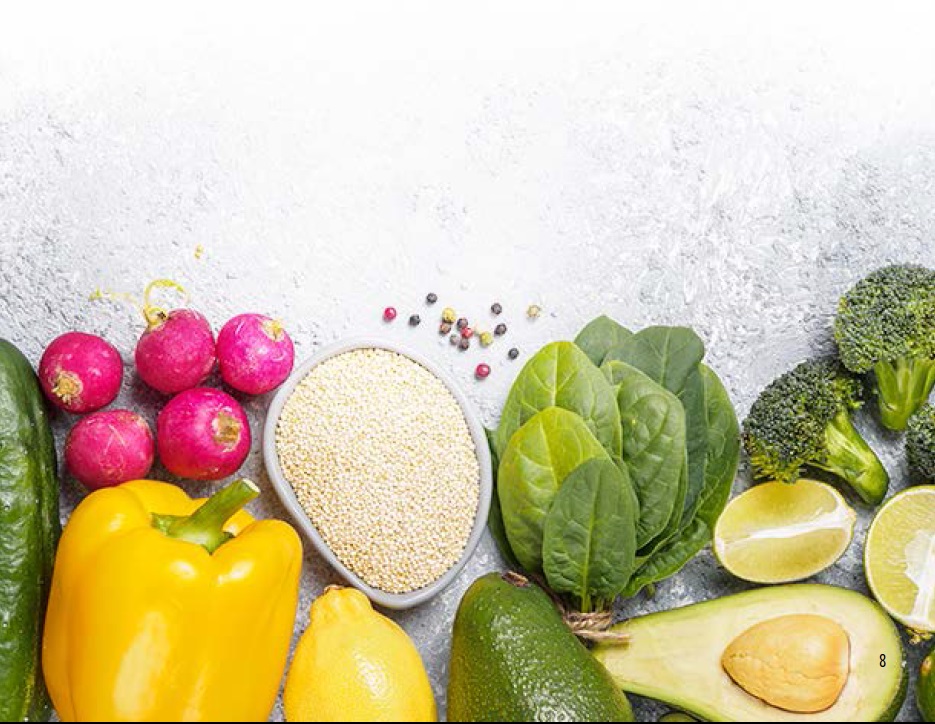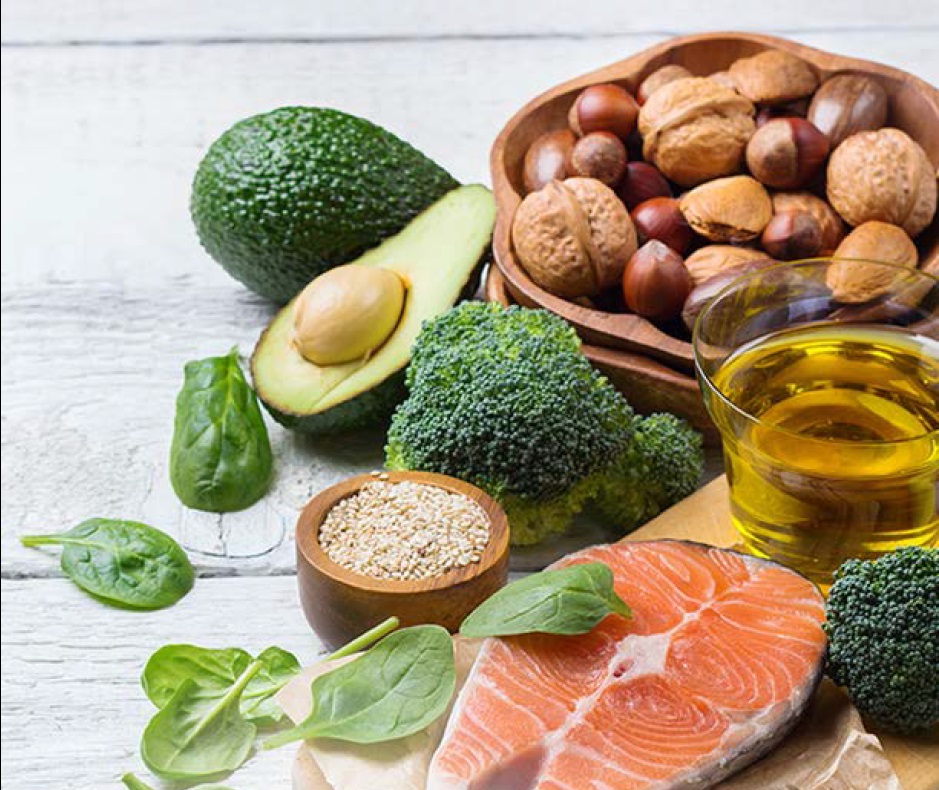The beauty of a low-carb/ketogenic diet is its simplicity. For most people, eating more fat in place of carbs will prevent overeating and lower insulin levels so you lose weight quickly without having to track calories or macros.
This is the second part of two parts of an article written by the team at ONNIT about eating high fat, low carbs.
In this part, we’ll discuss:
- What Can’t I Eat On A Ketogenic Diet?
- What Does A Day of Keto Meals Look Like?
- Is The Ketogenic Diet Safe?
- Work Out. Is A Ketogenic Diet Right For Me?
- How Do I Set Up A Keto Diet?
Enjoy,
Scott
By Sean Hyson, C.S.C.S., Andrew Heffernan, Liv Langdon, Phil White, and the Onnit Academy
What Can I Not Eat On A Ketoegenic Diet
Basically, anything high in carbs—no matter how nutritious it is otherwise—should be minimized or banned from your kitchen.
Sugar
This encompasses soda, fruit juice, smoothies, pastries, candy, and desserts, as well as some condiments like ketchup and barbecue sauce.
Alcohol
No smart diet allows you to booze, but in addition to the problematic effects of alcohol by itself, most drinks contain sugar. However, the occasional small serving of dry red wine may not kick you out of ketosis or otherwise spoil your fat-burning efforts. See ‘Can I Drink On A Ketogenic Diet?‘
Proceessed Foods
Grains
Crackers, chips, or any snacks labeled as “low-fat,” no matter what other nutritional benefits they may claim.
Also included here: foods that contain sugar alcohols (such as sorbitol or xylitol). These are common in “sugarfree” foods and may negatively affect ketone levels.
Fruit
The sugar content is too great. However, small amounts of berries are low in sugar, and can be part of a ketogenic diet.
Beans
Oats, corn, rice, pasta, bread, and other wheat-based products. See ‘Are There Any Exceptions To The Rules?’ below.
Peas, lentils, kidney beans, garbanzos, etc. Again, see our section on exceptions.
Processed Fats and Oils
Mayonnaise, soybean oil, canola oil, and other vegetable oils whose fats have been refined can promote inflammation.
Are There Any Exceptions To The Rules?
On a strict keto diet plan, potatoes, sweet potatoes, beets, carrots, parsnips, and other starchy root vegetables and tubers are blackballed. However, if you’re doing a ketogenic diet and working out, or the Mod Keto diet we like, you may want some
extra carbs to support your workouts, and these foods should be your main source. See ‘I Work Out. Can I Do A Ketogenic Diet?
On Mod Keto, you can also get away with eating moderate amounts of other carb-based foods such as fermented bread (sourdough), sprouted grains, and beans like chickpeas.
This version allows for a broader selection of foods because it recognizes the nutritional benefits of some carb foods regardless of their lack of compliance with a strict keto diet. Sourdough and sprouted grains, for example, contain numerous vitamins and minerals in a highly digestible form, and chickpeas are high in fiber, slowing down your body’s digestion of their carbohydrates and preventing the blood sugar spikes that raise insulin. When these foods are eaten, especially after workouts when your insulin sensitivity is high, the small hazards they pose to the effectiveness of ketogenic dieting are greatly offset and don’t outweigh the benefits.
What Does A Day of Keto Meals Look Like?
Below is a sample day of eating for someone who’s just easing into a ketogenic diet.
Breakfast
Omelet made with organic eggs, tomato, and mixed peppers, cooked in coconut oil. Sliced avocado.
Snack
Handful of cheese (from grass-fed, organic dairy), handful of almonds
Lunch
Grilled wild-caught salmon. Salad dressed with olive oil and vinegar.
Dinner
Grass-fed burger topped with salsa and organic bacon. Asparagus spears dressed with organic, grass-fed butter.

Most beginning keto dieters don’t realize that protein can raise insulin just as carbs can. The body actually makes carbs from protein when it needs to in a process called gluconeogenesis, so it’s important that any high-protein food you eat be paired with fat and fiber sources to slow its digestion and keep insulin in check. Never eat egg whites—go with whole eggs and pair them with avocado. White fish are lean, so cook them in butter or oil, and eat them with vegetables.
Once you’ve gotten the hang of keto eating, to get better results, consider cutting the number of meals you eat back and combining the diet with long fasts (called intermittent fasting). Many people on keto diets fast by choice. Avoiding food for long periods makes your body think that food is scarce, and it responds by making several adjustments to become more efficient with your energy. Research from Dr. Valter D. Longo at the University of Southern California shows that fasting can help with weight loss and blood pressure, and can even alleviate symptoms of debilitating health conditions such as asthma and arthritis. You don’t have to fast to make a ketogenic diet effective, but the two are often done in combination for the best results.
“Following a low-carb/ketogenic diet generally makes intermittent fasting easier and sustainable for the average person,” says Dominic D’Agostino, Ph.D., an associate professor at the University of South Florida and one of the world’s top experts on low-carb and ketogenic diets (ketonutrition.org). This is due to the appetite-control properties of eating abundant fats and proteins. If you had a big dinner with, say, fatty meats and avocado, you’re less likely to wake up ravenous and may be more comfortable skipping breakfast and waiting till lunchtime to eat.
Ease into fasting by skipping breakfast. Your body will go into fight-or-flight mode, which will help with alertness. You may not even need your morning coffee anymore. However, fasting doesn’t have to mean avoiding liquids as well as foods. “Starting your day with a full glass of water, followed later by a cup of black coffee, sipped slowly over the morning hours, tends to have a mild appetite-suppressing and fat-mobilizing effect,” says D’Agostino.
To take full advantage of the diet, try to gradually scale back to having one meal per day at night. This isn’t as severe as it sounds. Without eating, your mind will be sharp and you’ll burn fat at a greater rate. To control hunger, you can continue drinking water and coffee, blended with butter or MCT Oil, as needed (see ‘What Supplements Can I Take on a Ketogenic Diet?‘).
At night, you can eat as much as you want. This strategy works well for people looking to lose weight (especially the very overweight) and improve general health.
Note, however, that if you’re an athlete, you’ll probably need to take in more food to support your activity and muscle mass. See ‘I Work Out. Is A Ketogenic Diet Right For Me?;
How Do I Know If I Am In Ketosis?
The only way to be sure is by testing your blood glucose and ketone levels with a monitor (we like the Precision Xtra). But not only is this invasive (you have to prick your finger), it can get expensive, as the monitor requires test strips too which can be five dollars each. Ketosis can also be measured through devices that analyse breath and urine, but these aren’t as accurate.
A low-tech, low-cost way to check that you’re on the right track is to look for the telltale signs: keto flu and bad breath in the early stages (yes, we know this sounds bad, but we explain it in the next part, ‘Is The Ketogenic Diet Safe?’), and then reduced hunger and fast weight loss. If you’re watching your carbs and staying true to the diet, it’s just a matter of time before you settle into ketosis—or close enough to it (if you’re following the Mod Keto protocol) to see and feel results.

Jeff Volek, Ph.D., R.D., and Stephen Phinney, M.D., Ph.D., are two leading researchers on ketogenic diets. In their 2012 book, The Art and Science of Low Carbohydrate Performance, they say that while there is no magic number of carbs that everyone should limit him/herself to, “as a ball-park guess, we have found that 50 grams per day is a good target for most people to stay below” in order to maintain ketosis. But genetics, activity level, your overall diet, and many other factors make each dieter’s carb cap individual.
Is The Ketogenic Diet Safe ?
We know… we know… A diet that’s heavy on meat and all but bans fruit and whole grains flies in the face of conventional nutrition dogma, leaving many to wonder if going keto might be dangerous long-term, despite the numerous health benefits we listed earlier.
For most reasonably healthy adults, there’s no evidence to suggest that ketogenic eating is harmful. Interestingly, our colleagues at Healthline.com unearthed a particularly powerful piece of evidence from the US Institute of Medicine’s Food and Nutrition Board. Their 2005 report clearly states that, “The lower limit of dietary carbohydrates compatible with life apparently is zero, provided that adequate amounts of protein and fat are consumed.” While they don’t recommend consuming no carbs at all, and neither do we, it goes to show that extremely low doses are not only safe but natural as well.
What Is The Keto Flu
As your body switches over from fueling itself with carbohydrate to fat, there is going to be a little bit of a lag. This is what people callcarca the keto flu, since at some point during the first two weeks of a ketogenic diet people can feel lethargic, moody, have difficulty sleeping, and even develop bad breath.
Stick with it. All of this is normal and will pass as your body adjusts to ketosis. The bad breath is the result of a specific kind of ketone that exits the body through breath; you can mask it with a chlorophyll– or sugar-free mint
It takes anywhere from three to six months for your body to become fully adapted to using ketones, but the worst should be behind you in a matter of days, and you’ll be feeling better than ever.
I Work Out. Is A Ketogenic Diet Right For Me?
Sports nutrition science has long preached that carbohydrates are the body’s best and preferred fuel source during exercise, but research is emerging to suggest that they don’t have to be. A study published in Nutrition & Metabolism looked at overweight women who weight trained on a ketogenic diet, finding that they lost body fat without significant loss of lean body mass. Another trial from the Journal of the International Society of Sports Nutrition found that a month of keto dieting didn’t negatively affect performance in gymnasts while decreasing their body fat levels. Furthermore, the researchers determined that muscle was spared specifically due to ketosis. In other words, despite a low-calorie intake, the athletes didn’t lose significant amounts of muscle because their bodies used ketones for fuel—not protein from their muscle tissue.
Other studies have shown that ketogenic diets don’t hurt strength or endurance (once the athlete is fully adapted to them), but if you’re a dedicated gym goer or highly active person, we don’t see a need to take the textbook keto approach. A more moderate, low-carb plan (such as Mod Keto) will work fine. According to Onnit’s Director of Total Human Optimization, Kyle Kingsbury, a former pro athlete who has experimented with low-carb diets for years, getting 40–60% of your calories from fat, 20–40% from protein, and 20% from carbs is a good balance that will give you the weight loss and focus benefits of ketosis without the potential for low energy or slow recovery from exercise.
If you’re a more passive exerciser and not doing aggressive workouts like high-intensity interval training (HIIT), which is characterized by short bursts of all-out work efforts interspersed with short rest periods, you won’t need as many carbs and can therefore increase your fats even more. In that case, a diet closer to 65% fat, 25% protein, and 10% carbs may be more appropriate. Dominic D’Agostino, one of the world’s foremost researchers of ketogenic diets—and a former bodybuilder—has said that he personally takes in 65%–70% of his calories from fat and 20–30% from protein.
Try timing the carbs you do take in strategically. Carbing up at night after you’ve trained will make your liver and muscles soak up the carbs they need to recover from the workout and fuel your next one. Starchy, slow-releasing carbs like potatoes and othertubers would be perfect. Do NOT eat carbs before you train, as they will replace fat as your fuel source for the workout.
How Do I Set Up A Ketogenic Diet?
The beauty of a low-carb/ketogenic diet is its simplicity. For most people, eating more
fat in place of carbs will prevent overeating and lower insulin levels so you lose weight
quickly without having to track calories or macros. Start with that.
However, if you’re an athlete or regular exerciser, or you find you’ve hit a plateau with your diet, you need to start reading labels and recording what you eat. In Chapter 1, we gave you percentages of total calories to follow, which begs the question, “How many calories should I be eating?”
The answer depends on your goals. If you want to lose weight, multiply your current body weight by 10–12. If you’re very overweight, choose the body weight you’d like to have and times that by 10–12. This isn’t an exact science; you just need a starting point. You can adjust your calories from there as things progress. If your goal is to maintain your weight but change your body composition (a little more muscle, a little less fat), multiply your body weight by 13–15.
For example, a highly active 180-pound man who wants to lose weight doing Mod Keto would set his calories at 2,200 (180 x 12 = 2160). Fat will make up 60% of his diet, which is 1,320 calories (0.60 x 2200). Since there are nine calories per gram of fat, he’ll eat about 150 grams of fat daily. Twenty percent of 2,200 is 440 calories, or 110 grams each of protein and carbohydrate (as protein and carbs both contain four calories per gram).
So, in short, this 180-pounder should aim for 2,200 calories consisting of 150 grams fat, 110 grams protein, and 110 grams carbs to diet down. Whether you work out or not, do your best to consume the bulk of your carbs in the evening with dinner. Not only will this keep your mind sharp during the day when you most need it to be, it will further help your body adapt to using fat for fuel.
What Supplements Can I Take On A Ketogenic Diet?
Going keto is much easier than it used to be. Products now exist that can help you reach ketosis sooner and bring you back into it after a cheat meal here and there. Exogenous ketones—including beta-hydroxybutarate—are ketones made in a lab that function just like the ones your body makes from fat. They’re particularly beneficial in combating the keto flu, helping you think more clearly while your body makes the adjustment. Onnit’s new Total Keto Daily product contains such ketones.
MCT oil is another go-to for ketogenic dieters. A study in the journal Diabetes found that medium-chain triglycerides (MCTs)—a type of saturated fat—improve cognitive function when blood sugar is low, encouraging the body to generate more ketones for the brain to run on. And, as we reported in our defence of coconut oil, MCTs are burned quickly for energy. A Journal of Nutrition study comparing subjects who consumed MCT’s or the same amount of long-chain fats lost significantly greater body fat after 12 weeks.
Meanwhile, research from 2015 in the European Journal of Clinical Nutrition revealed that subjects who consumed supplemental MCT’s ate less at meals afterward than those who were given processed corn oil. Their glucose raised less after a meal and their leptin, a hormone that promotes satiety, was higher.
Remember that proteins can raise insulin levels just as carbs do, potentially pushing you out of ketosis or preventing you from reaching it. The ever-popular whey protein is one such offender. In its place, you can supplement with an essential amino acid product. Take a look at products like NatureAminos, which you can pick up here. Amino acids do act on insulin, but not to the same extent as whey. You’ll get the muscle building components of protein in an even more digestible form without threatening your ketogenic diet.
To read the first part of this article, please click here.
This article originally appeared and can be downloaded as a PDF from the ONNIT Academy.



Thanks for this valuable and useful information